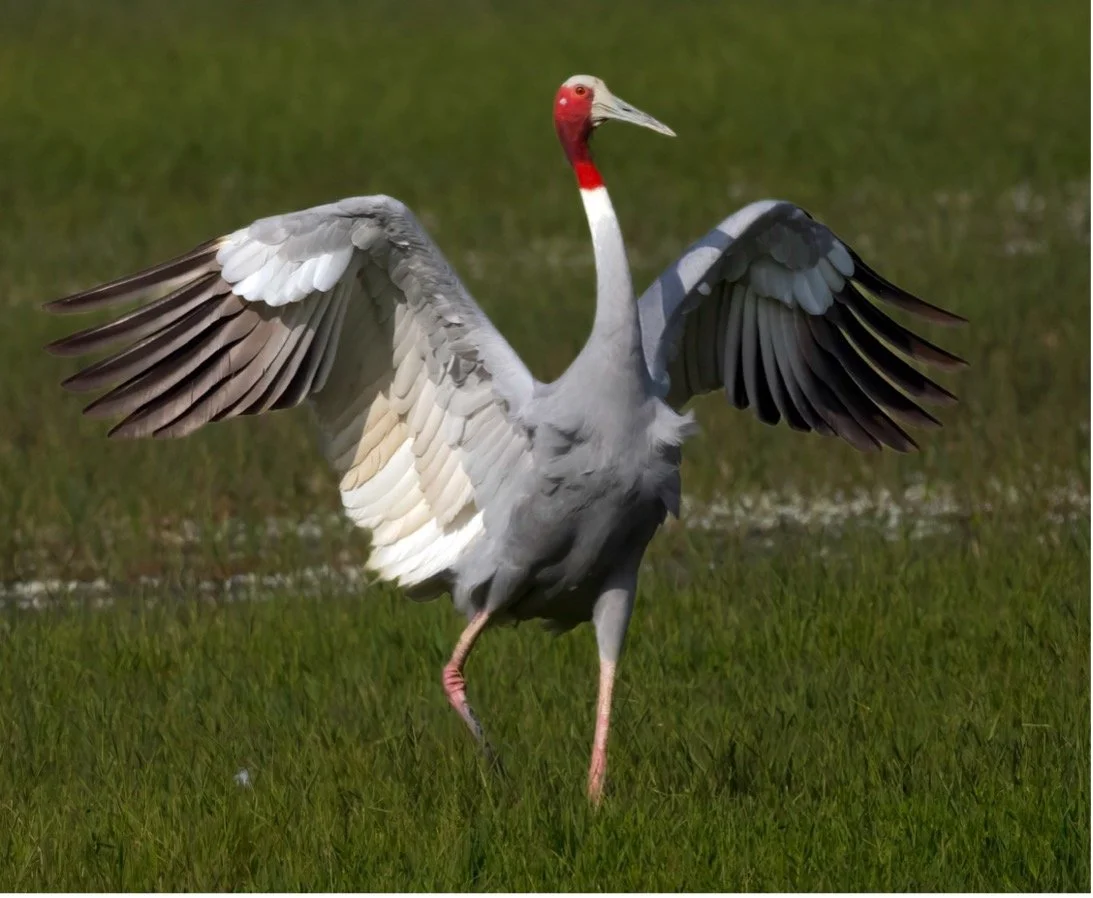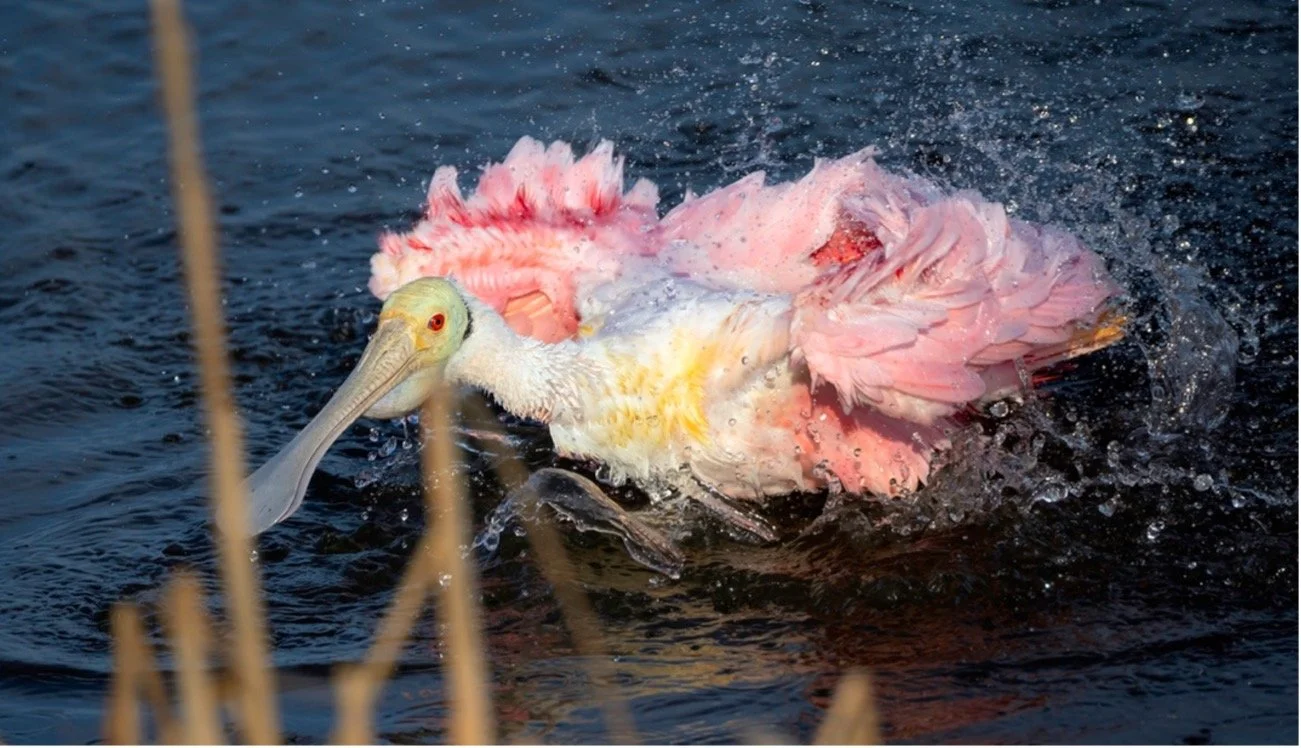Games Waterbirds Play!
One of the most immersive aspects of waterbirds is the way they interact with the water in and around which they spend most of their lives. It is fascinating to watch when herons dive their bills in the water to catch fish, white pelicans lift the water from their large pouch-shaped bills, reddish egrets dance around in search of fish or when a northern shoveler slides on the water surface for either a lift-off or landing. Waterbirds here refer generically to a large group of birds who spend a lot of time staying or feeding in the water, such as pelicans, herons, ducks, egrets, storks, and flamingoes. They generally have webbed feet that let them float on the water without getting their feather wet. Their primary habitat are waterbodies, such as wetlands, marshes, lakes, or coasts.
Though I have photographed a wide range of activities of waterbirds during the last few years, eight sets of actions have been more numerous than others – dipping, splashing, fishing, flapping, reflection, chase, landing and lift-off. These actions not only create beautiful water shapes but also create a great setting for wildlife photography. Here are some of the photos that I have clicked in different parts of the United States and India.
Dipping: The dipping offers nice shots of water coating of the bodies and faces of waterbirds, and water droplets forming and falling off the bills.
A Black-necked Stilt taking a dip in the water at Leonabelle Turnbull Birding Center, Port Aransas, Texas
A group of White Pelicans dipping at J.N. "Ding" Darling National Wildlife Refuge, Sanibel, Florida, USA
Fishing: One of the most exquisite wildlife actions come from their hunt for prey. A large number of waterbirds feed off fishes from the water.
A Great Blue Heron catching fish at James River, Richmond, Virginia, US
A White Egret fishing at Chincoteague Island, Virginia, USA
Flapping: Waterbirds often, while relaxing, flap their wings either to let go of inertia or water among other reasons.
A group of White Pelicans flapping their wings at Leonabelle Turnbull Birding Center, Port Aransas, Texas
A Sarus Crane flapping its wings at Dhanauri Wetlands, Greater NOIDA, India
Splashing: The water bodies with low water level provides the best setting for splashing since it allows waterbirds to settle on the ground and play around with water.
A Roseate Spoonbill taking a dip in water at Leonabelle Turnbull Birding Center, Port Aransas, Texas
A White Pelican taking a dip in the water at Leonabelle Turnbull Birding Center, Port Aransas, Texas
Reflection: Reflections provide one of the best settings for great portraits of waterbirds. They are best found in the stillness of shallow water bodies, such as lakes, ponds or marshes. The Huntley Meadows Park in Northern Virginia, USA and the Nal Sarovar Bird Sanctuary in Gujarat, India are great places for clicking awesome reflections of waterbirds.
A pair of Lesser Sand Plover or Siberian Plover near Tso Moriri in Ladakh, India
A Great Blue Heron at Huntley Meadows Park, Northern Virginia, United States
Chase: Waterbirds often engage in the game of chasing other birds of their kind for various reasons, such as competing for food or claiming their territories.
A Double Crested Cormorant chasing another one at Conowingo, Maryland, USA
A male Northern Shoveler chasing away another male of its kind at Huntley Meadows, Alexandria, Virginia, USA
Landing: Different waterbirds have different landing styles. For example, a roseate Spoonbill stretches her bills forward before landing. Pelicans generally have a distinct style of landing. When they descend, they spread their wings wide open while sliding over the water. Also, the same waterbird may use different landing styles on different occasions. Herons and Egrets have softer landing styles. Brown Pelicans tend to dive head-on into the water.
A Green Heron landing on a wood-log at Huntley Meadows Park, Alexandria, Virginia, USA
A Roseatte Spoonbill landing at Leonabelle Turnbull Birding Center, Port Aransas, Texas
A Reddish Egret (white morph) lands (Port Aransas, Texas, USA)
Lift-off: As is the case with the landing, there are different lift-off styles of waterbirds. These styles create great opportunities for amazing photoshots of waterbirds and accompanying water-shapes. The large-size waterbirds can generate larger water displacement and therefore produce a variety of water shapes.
A large group of Flamingoes take off at Nal Sarovar Bird Sanctuary, Gujarat, India
A Dalmatian Pelican lifts off at Nal Sarovar Bird Sanctuary, Gujarat, India
This list is not exhaustive, and photographers can often find other awesome moments and bird-positions for great pictures of waterbirds. The idea is to kick off the discussion and offer basic frames of reference for photographing waterbirds.


















